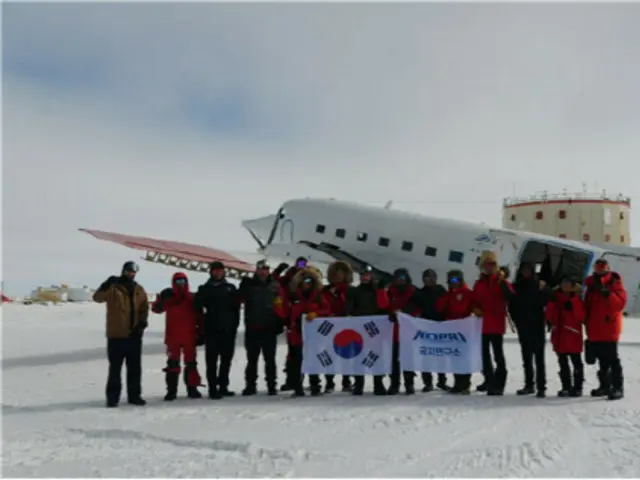The Polar Research Institute continues its research today to find clues. The Polar Research Institute under the Ministry of Oceans and Fisheries has succeeded in exploring the 3,500m thick glacier in Antarctica using radar technology developed under the leadership of South Korea.
It was announced on the 5th that it was successful. The glaciers, which are more than 3,000 meters thick, were formed at least 1.5 million years ago and contain information about the atmosphere at that time, making them important materials for climate change research.
It is believed that Since 2018, a research team led by Dr. Lee Joo-han of the Polar Research Institute has been researching radar technology that can perform such glacier exploration. ice with radar
It is possible to obtain data that allows visual confirmation of not only river layers but also the structure of Antarctica beneath glaciers. The first radar exploration was successful, and it is hoped that full-scale research into deep glaciers will become possible.
Waiting. Deep glaciers are glaciers that exist at a depth of at least 1,000 meters, and it takes a long time, more than 10 years, to drill a deep glacier. And this includes the target
``Radar exploration'' is essential to accurately select areas to be covered. The Polar Research Institute plans to proceed with further exploration over the next three years and begin full-scale research into deep glaciers.
South Korea began researching Antarctic glaciers in 1988. Since the Se Jeong Science Base was established in Antarctica in 1988.
In 2019, the first icebreaking research vessel, the Araon, was built, and in 2014, the second Antarctic base, the Chang Bogo Scientific Base, was built. inside rather than on the coast
Based on the location of the base on land, research is progressing on the environment, including glaciers, meteorites in Antarctica, and astronomy. In particular, future research will focus on the research that South Korea has opened for research in the interior of Antarctica.
This is the ``K Route,'' which is a land route that is being developed. The goal of Route K is to use Jangbogo base as a base to advance into Korea's own inland areas. A total of 2215km will be opened by January.
Once completed, it is expected that data necessary for research on climate and the global environment will be obtained, including not only deep glaciers but also subglacial lakes, which are lakes created by melting beneath glaciers.
In addition to this research, the Zhang Baogao base is also steadily uncovering the secrets of climate. Antarctic ice shelves will collapse after melting due to global warming in 2018
He was the first in the world to investigate the process by which ice melts, and through research on the Thwaites Glacier, along with the United States and the United Kingdom, he is also tracking the process by which sea levels change due to melting glaciers. Also, 20
In 2023, it set a record for drilling the world's fourth-thickest ice shelf, and is expected to help improve the accuracy of future predictions of sea level rise.
Lee, Director of the Polar Research Center's Future Technology Center, said, ``Antarctic glaciers are the earth's historical materials that have the most detailed record of ancient climate on earth,'' and ``Rare
"With this exploration, we are now able to smoothly begin research to respond to climate change."
2024/03/10 07:06 KST
Copyrights(C) Edaily wowkorea.jp 107

